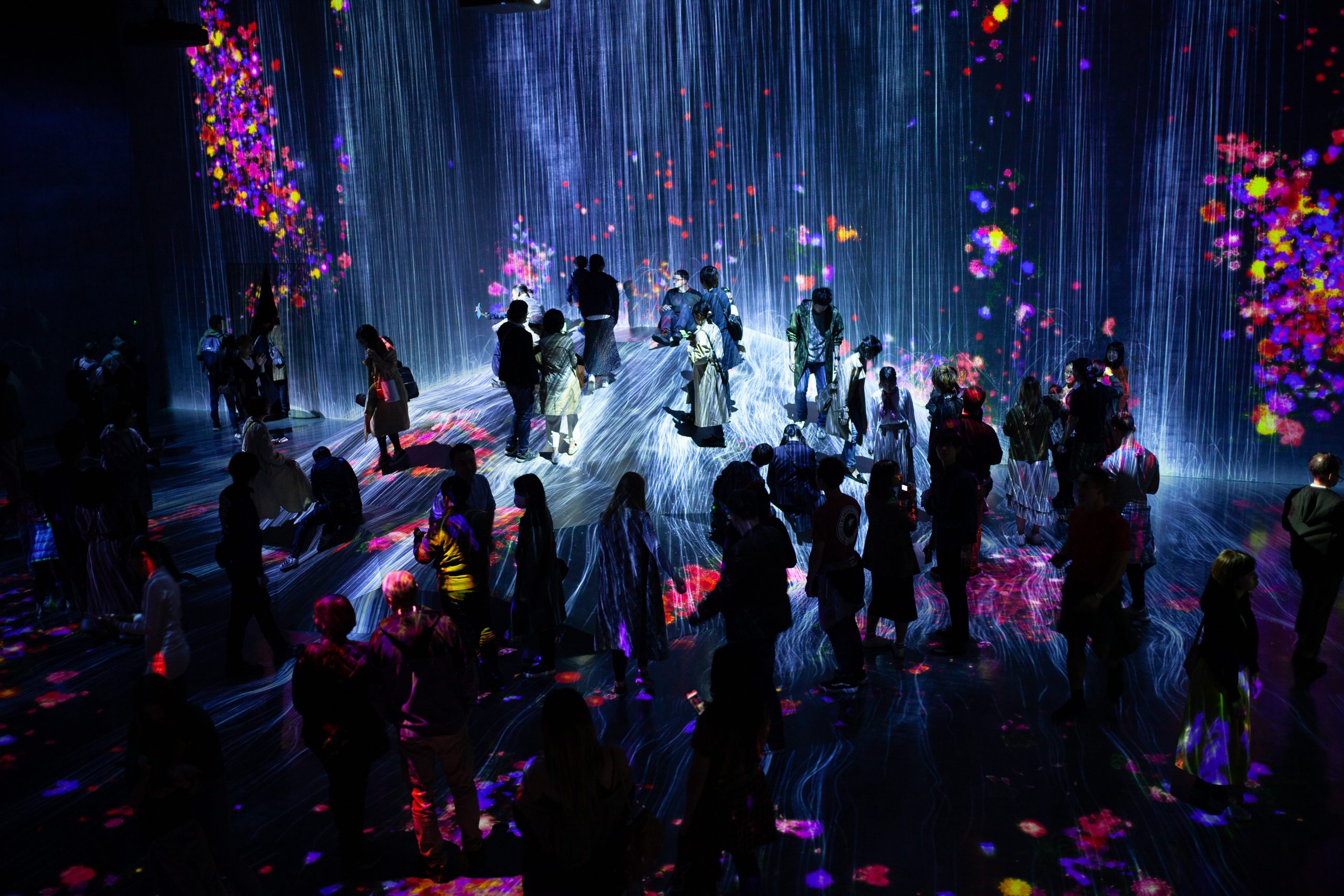Branding an Experience – Art as the Basis of Meaningful Travel
- Art/
- Culture/
- Travel/
By Marc Cansier & Jason Schlabach
Share
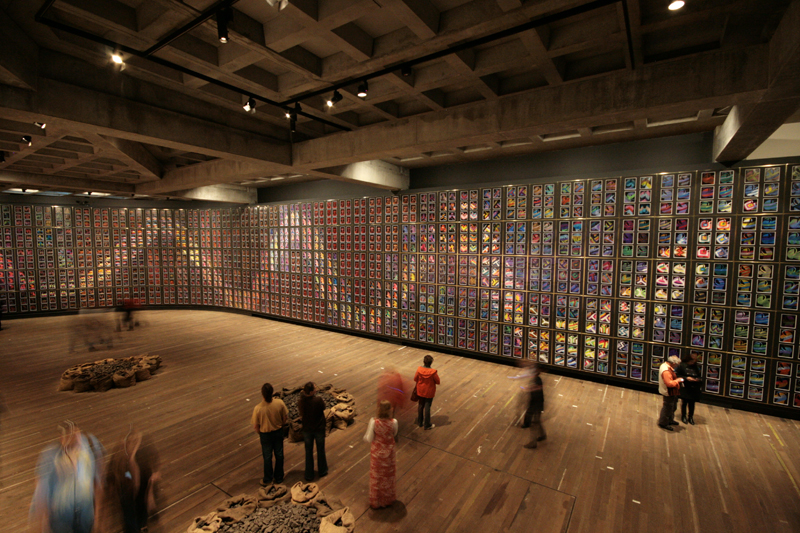
Visitors enjoy an installation at the highly acclaimed Museum of Old and New Art in Hobart, Tasmania
Travelling is taking on a new focus the world over – fewer group portraits in front of monuments and an increasing thirst for creative experiences that forge a deeper connection to local culture and art communities.
With this in mind, it is clear that the battlefield for place branding has shifted within artistic and cultural territories. This is not only affecting cities and art institutions, but also greatly influencing the travel, hospitality and retail industries. In Asia, even the temples of consumerism are taking notice, with brands such as K11 Malls. displaying the bold ambition to become places where “art and people meet.”
Travel and awareness of the art scenes of Japan, Korea and Taiwan was not easy in the past. The last five years have seen people travelling to these places specifically for the purpose of the enjoyment of art.
Art is the Destination
The epitome of this combination of culture, art, travel and commerce is Art Basel, the global tour de force that has redefined art fairs, and the recently wrapped Hong Kong event gives us a chance to see its new impact on the region. The 2014 fair brought 65,000 visitors through the doors of the exhibition hall to see work from more than 200 galleries from all corners of the world. While the breakdown of tourists vs. residents isn’t clear, exhibitors commented on an increased diversity in the types of visitors, meaning the appeal of art in the region has broadened beyond seasoned collectors and industry insiders. Doryun Chong, Chief Curator at M+ Museum, observed that Asian travellers are increasingly engaging in art related travel all around the world. While at Art Basel in Basel or at the Venice Biennale, he noted a sharp increase in the number of Asian visitors, particularly Chinese, over the last five years. This group of sophisticated and curious Chinese travellers is exploring new parts of tried-and-true destinations like Paris and London, but also finding areas of interest in locations closer to home. “It was only half a century ago, but travel and awareness of the art scenes of Japan, Korea and Taiwan amongst Hongkongers was not easy in the 1960’s. This started to change in the 90’s and has escalated at such a speed that you can see the differences every year now. The last five years have seen people travelling to these types of places specifically for the purpose of the enjoyment of art,” says Chong.
Art Basel Hong Kong has become one of the most popular public events of the year.
Photo courtesy of MCH Messe Schweiz (Basel) AG.
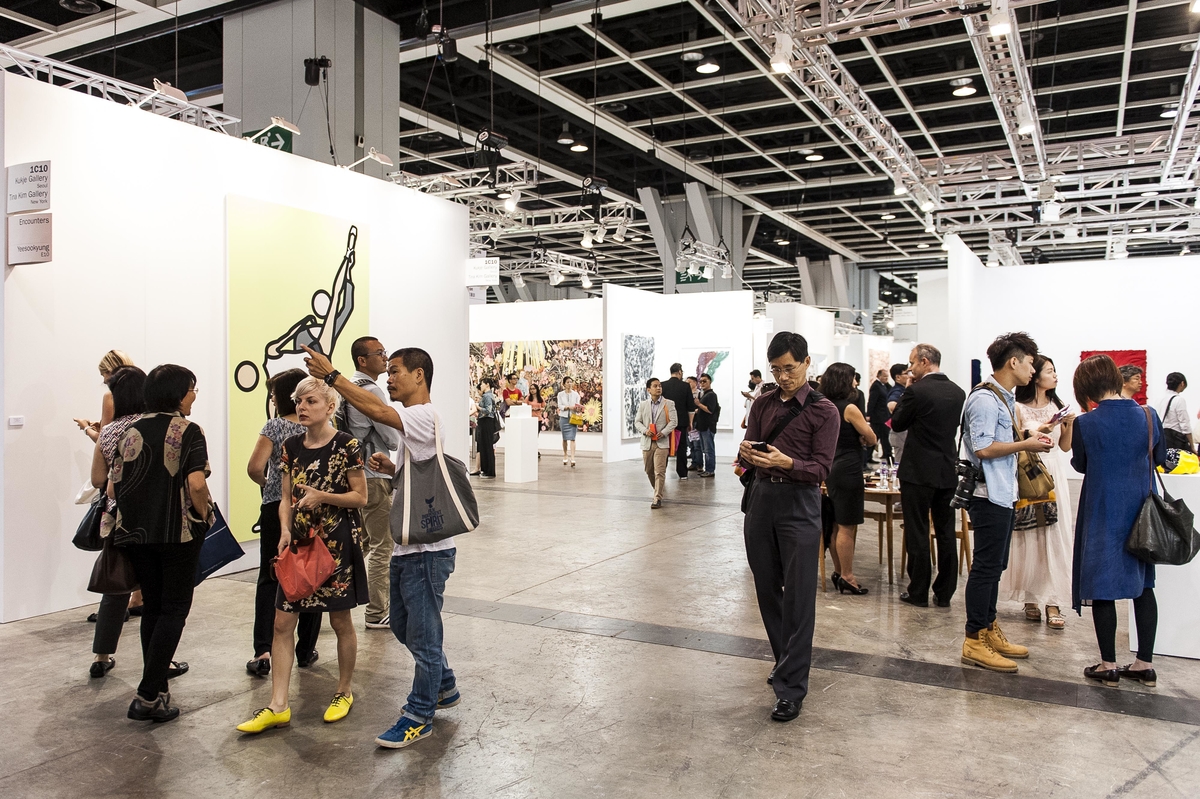
Aerial view of the former Central Police Station Compound, now known as Tai Kwun Centre for Heritage and Arts
M+ Pavillion at the West Kowloon Cultural District in Hong Kong
You get this extraordinary mix of Tasmanian locals rubbing shoulders with art-erati from Sydney and Melbourne along with really eager young Chinese hipsters in this very remote part of the world.
Place Branding through Art
The skyrocketing expansion of travel in search of artistic experiences (global cultural tourism makes up 40% of all leisure travel) means the competition among cities to capture a slice of this market is growing rapidly. With an initial government endowment of more than HK$29 Billion, Hong Kong’s West Kowloon Cultural District on the harbour – anchored by the ambitious M+ Museum – has thrust the city into the artistic spotlight. It will be going head to head with Singapore, Seoul and Tokyo to attract visitors to art installations as well as for dumplings and the harbour skyline view. The inter-city rivalry is growing fierce, fuelled by a widening collection of monumental buildings by starchitects and blockbuster travelling art exhibitions. But an emerging demographic of curious travellers is also venturing into warehouse art districts and offbeat cultural locations in Hong Kong, with a relentless desire to find original perspectives and experiences. The Benesse Art Site Naoshima in Japan and the Museum of Old and New Art (MONA) in Tasmania exemplify the phenomenally successful examples that everyone is hoping to match. Benesse Art Site is a sprawling collection of breathtaking contemporary art by masters such as Hiroshi Sugimoto and Hiroshi Senju and architecture, located on islands in the Seto Inland Sea. These striking artistic interventions among the natural landscape are an invaluable contribution to the local community and serve to inspire visitors who make the trek to see this special place. The MONA in Hobart, Tasmania originated from the motivation and private collection of an individual, David Walsh, who was determined to create a world-class art destination. Over the years, it has grown into a tremendous driver of tourism to the region. As Simon Westcott, CEO of LUXE City Guides, relates, “You get this extraordinary mix of Tasmanian locals rubbing shoulders with art-erati from Sydney and Melbourne along with really eager young Chinese hipsters in this very remote part of the world.” It remains to be seen whether government-sponsored cultural efforts can match the organic vibrancy of the private initiatives mentioned above and others, such as Beijing’s 798 Arts District. The upcoming rehabilitation of Hong Kong’s Central Police Station, as a cultural hub tied into the very fabric of Central district, will be an interesting experiment to watch for, combining institutional and private endeavours. It’s a sure bet that without a thriving arts and culture scene, modern Asian cities won’t be drawing the crowds of tourists that more vibrant and creative hotspots do. As Marc Cansier of Marc & Chantal branding agency noted, “Participating in edgy and fresh cultural expressions is a huge draw for travel these days, and young Chinese travellers are even more keen to engage with this energy. It would be a shame and a wasted opportunity if they can’t enjoy at home what they find in New York, London and Paris.”
When brands connect travellers with real, authentic creative endeavours, the rewards become an integral part of the brand reputation.
Travel Brands see Art as the Key
When these art-savvy travellers arrive, smart brands are tapping into their desire to have accommodations that complete the total cultural experience. Airports have long commissioned artists to create evocative work that brands the location as forward-looking and innovative. Airlines such as British Airways are now doing the same, most notably with their kinetic installation by Troika, a London design studio, for the VIP lounges in Heathrow’s Terminal 5. Similarly, hotels across Asia are amping up their efforts to create art-centred stays by working with artists to not only hang paintings in the rooms, but affect the design and ambiance of the hotel itself. The Temple Hotel in Beijing is one of the few locations worldwide to host a James Turrell skyscape installation. The breathtaking environmental sculpture is a key part of the guest journey at the hotel, giving them a chance to be part of the installation as it changes with the light and weather conditions throughout their stay. It has achieved such a reputation that non-guests can now book a time slot to visit the room-size artwork on Sundays.
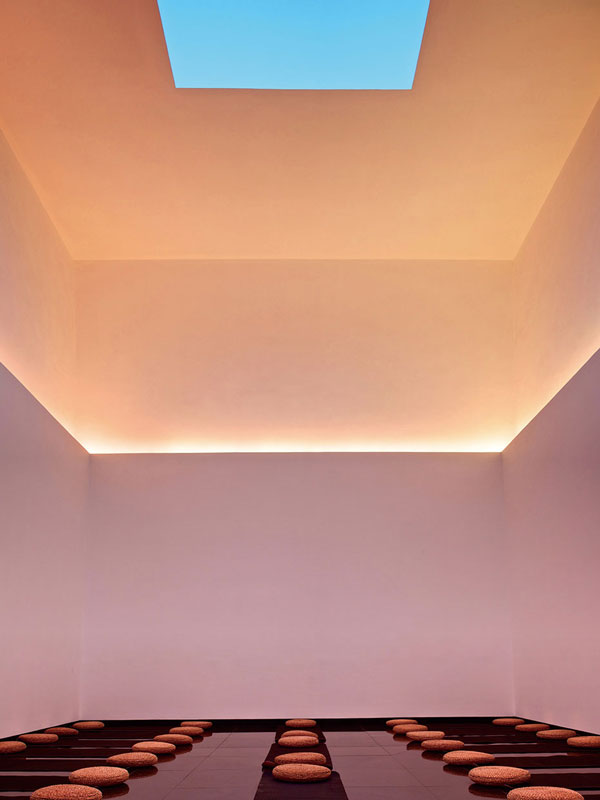
Gathering Sky by James Turrell at The Temple Hotel in Beijing.
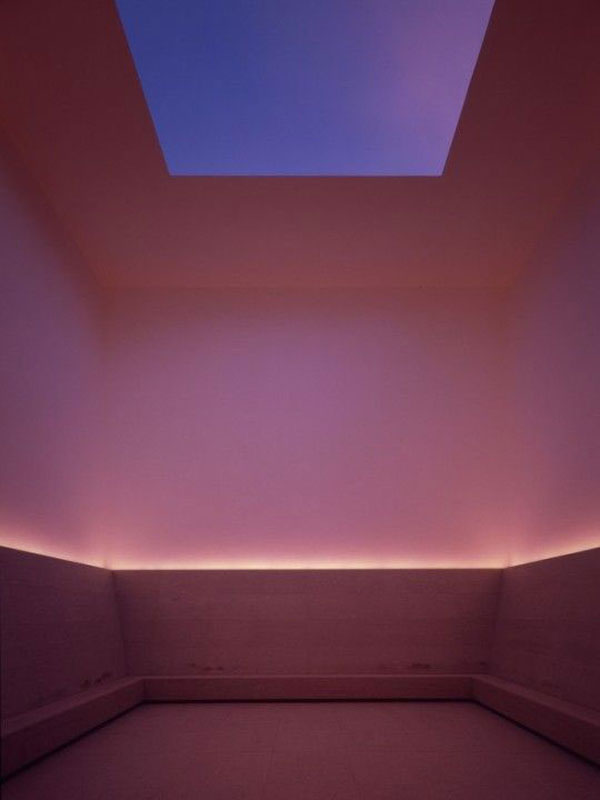
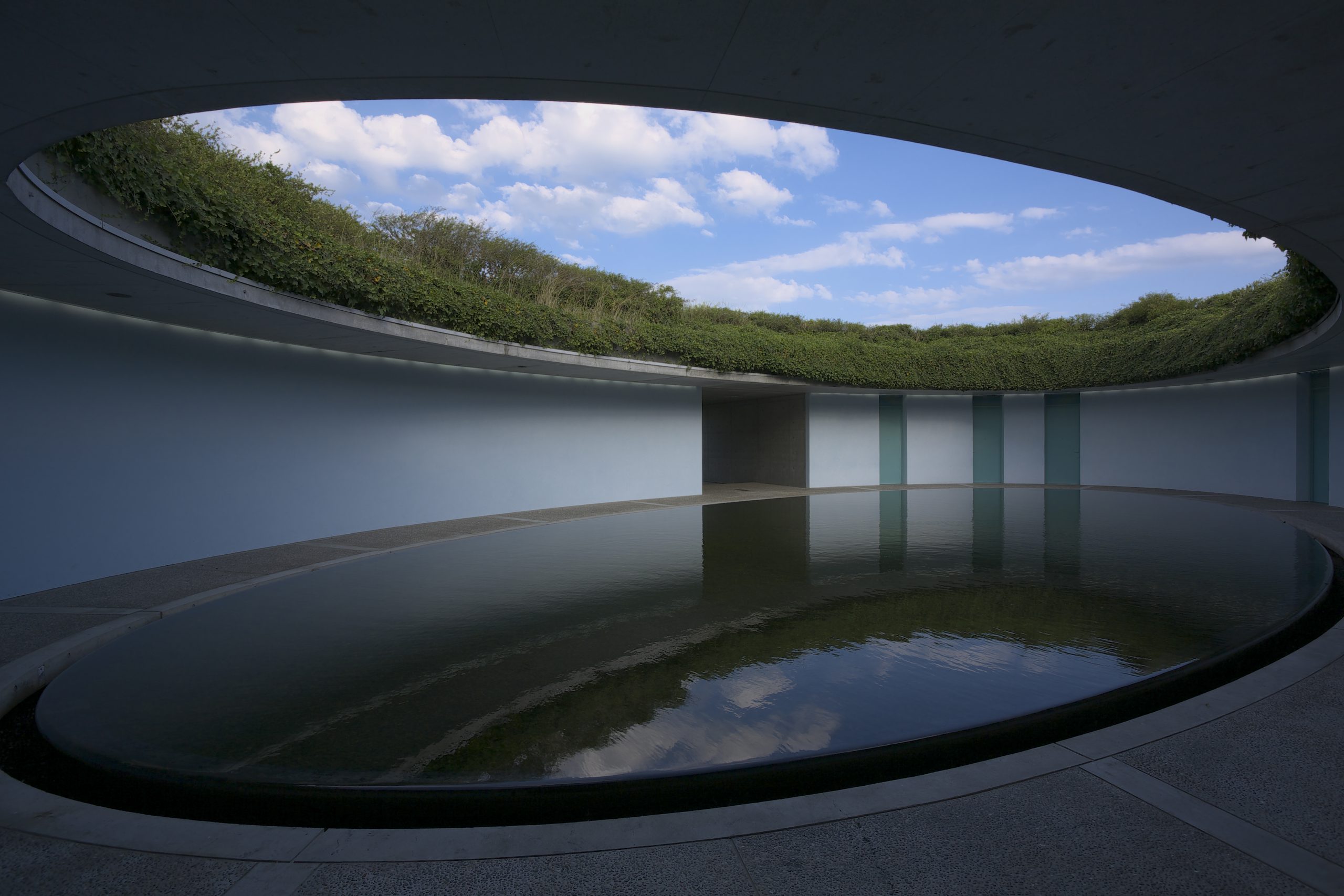
Tadao Ando’s Benesse House is considered an art piece as much as it is a hotel.
Standing in contrast to the zen atmosphere of The Temple Hotel, the Swatch Art Peace Hotel in Shanghai offers residencies to artists who live and work on the premises in exchange for leaving a ‘trace’ of their work behind. The combination of collaborations between the 18 artists and the semi-public nature of the program, make for a very engaging and active project. The goal is to enhance the artistic community of Shanghai and develop a unique hotel environment that is unlike anything guests have felt before. With all of the starpower of Japan’s well known architects on Benesse Art Site Naoshima, it’s no surprise that Tadao Ando’s Benesse House is considered just as much of an art piece as any found in the museums. The form of the building and the optical effects of a reflecting pool are an integral part of the hotel, but could stand on their own as an art installation. The sky view over the water installation is not used merely as decoration, but accessed from the six rooms of the hotel and a central part of each guest’s stay. The success of these branding activations is not in the status of the artists or the power of the brand, but in the integration with travellers’ expectations and interests. In each, the art serves to enhance a broader experience, rather than being relegated to a checklist itinerary. When brands go the extra mile to look for ways to connect travellers and guests with real, authentic creative endeavours, the results speak for themselves. It may not be an easy task to create original and engaging artwork that meets the high standards of these examples, but the rewards for brands can extend far beyond short-term gains to become an integral part of the brand reputation for decades to come. •
— Insights on this subject were discussed at the Marc & Chantal Le Salon talk at the Swire Properties Lounge at Art Basel Hong Kong on 17 May, 2014. Marc Cansier is a founding partner of Marc & Chantal, Jason Schlabach is a brand strategist at the agency.
